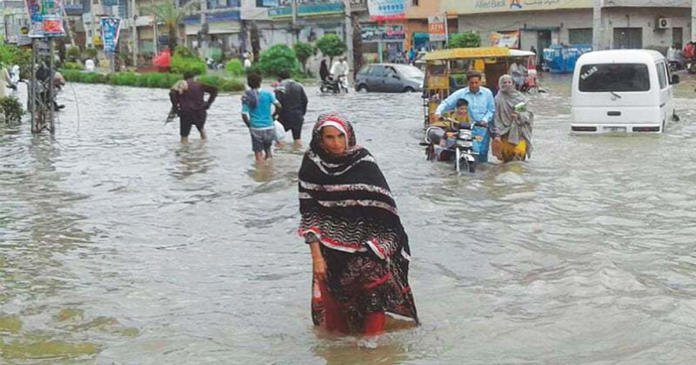The interim chief minister of Punjab, Mohsin Naqvi, reported on Wednesday that Lahore had “record-breaking” rainfall of 272 millimetres in just nine hours.
Urban flooding Lahore: He said in a tweet that urban flooding was a result of the persistent rain.
“The administration and the entire Cabinet are on the ground to clear the air.”
I am regularly receiving updates from all throughout Lahore while also keeping an eye on the situation there.’’
The caretaker CM had already travelled to various locations in Lahore and seen the water draining procedure.
The Water and Sanitation Agency (Wasa) reported that the Lakhsmi Chowk region received 259mm of rain, followed by Nishter Town with 258mm, Gulshan-e-Ravi with 251mm, Johar Town with 250mm, Qurtaba Chowk with 241mm, Tajpura with 238mm, Pana Wala Talab with 222mm, and Iqbal Town with 221mm.
The Met Office anticipates sporadic rain in Lahore in the next 24 hours.
Moist currents from the Arabian Sea were responsible for bringing about this situation, as stated in the report.
Additionally, The Met Office announced that there will be rain, wind, and thundershowers in districts including Kashmir, Murree, Galliyat, Rawalpindi/Islamabad, Jhelum, Attock, Chakwal, Sargodha, Mianwali, Faisalabad, Jhang, T T Singh, Bahawalnagar, Narowal, Sialkot, Sahiwal, Gujranwala, Gujrat, Mandi Bahauddin, Hafizabad, Lahore, Bhakkar, Layyah, Multan, and Dera Ghazi Khan.
However, The Met Office had projected monsoon rainfall for the country from July 3 to July 8 on Sunday.
Weather forecasters predicted on the evening of July 3rd that “wet currents from the Arabian Sea are likely to penetrate the upper parts of the country” and “there is also a likelihood of an incoming westerly wave entering the upper parts of the country.”

